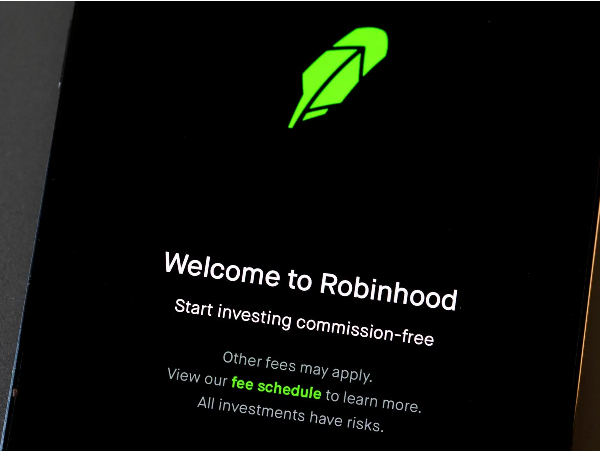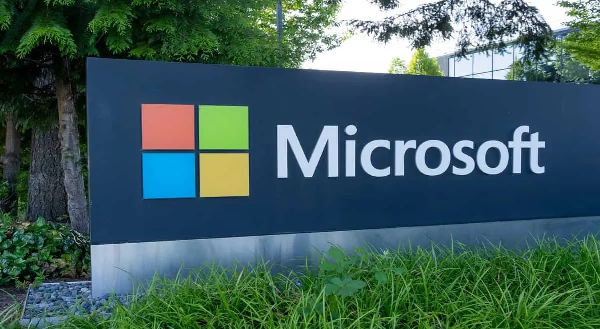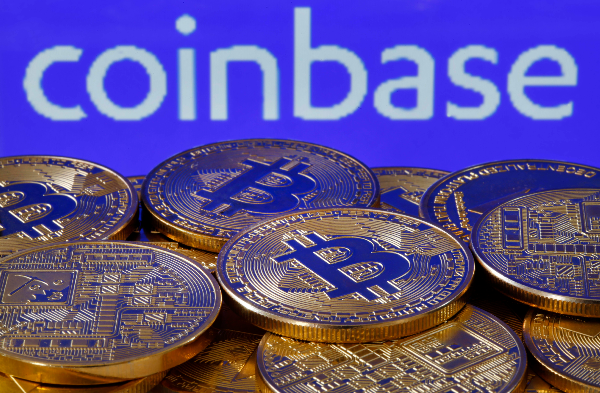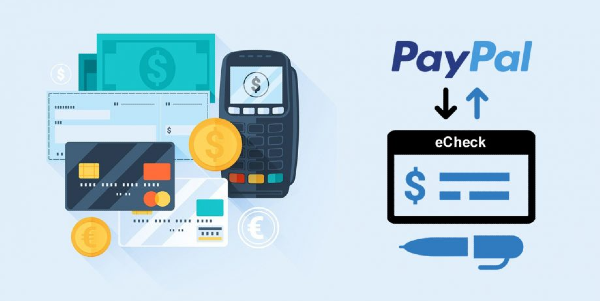Interactive Brokers: Business Analysis and Competitive Edge
Introduction
Interactive Brokers (NASDAQ: IBKR) stands as one of the most technologically advanced electronic brokerage firms, offering global trading access across a vast array of financial instruments. With a strong emphasis on automation, low-cost execution, and direct market access, the firm has positioned itself as a leading choice for sophisticated traders and institutional investors worldwide. This analysis breaks down Interactive Brokers’ core business structure, revenue streams, and competitive advantages, highlighting what sets it apart in the brokerage industry.
Business Structure and Technological Edge
At its core, Interactive Brokers operates as a highly automated electronic brokerage platform, servicing retail and institutional traders alike. Unlike many competitors who integrate third-party software, IBKR has developed its own proprietary technology over four decades. This technology-first approach provides lower costs, efficient order execution, and high scalability, allowing clients to trade a vast selection of financial products worldwide.
Trading Platforms and Client Segments
Interactive Brokers offers two primary account types tailored to different trader needs:
- IBKR Pro – Designed for active traders and institutional clients, offering tiered commissions, advanced trading platforms, and superior execution via smart order routing. Traders using IBKR Pro benefit from competitive margin rates and robust analytical tools.
- IBKR Lite – Targeting casual retail investors, this option provides commission-free trading on U.S. stocks and ETFs through payment for order flow (PFOF). While IBKR Lite offers a simplified trading interface, it comes with trade-offs, including less favorable margin rates and lower interest rates on idle cash balances.
Revenue Streams
Interactive Brokers operates with a diversified revenue model, leveraging multiple streams that are sensitive to macroeconomic factors.
1. Net Interest Income
Net interest income remains the largest revenue driver for IBKR. In Q1 2025, the company reported $770 million, reflecting a 3% year-over-year (YoY) growth. This revenue is generated primarily from:
- Interest on margin loans issued to clients.
- Investing idle cash balances held in customer accounts.
- Interest paid to customers, offsetting net interest income sensitivity to rate fluctuations.
Since net interest income is closely tied to interest rate movements, rising rates have boosted IBKR’s earnings in recent quarters, while falling rates could pose a future headwind.
2. Commissions
Commission revenue is another key earnings stream. In Q1 2025, IBKR reported $514 million in commissions, marking a substantial 36% YoY growth. These fees vary based on account type:
- Fixed or tiered commissions for IBKR Pro traders.
- Zero commission for IBKR Lite users (on U.S. stocks and ETFs), funded through payment for order flow (PFOF).
The sharp rise in commission revenue underscores increased trading activity, reinforcing IBKR’s sensitivity to market volume trends.
3. Other Fees and Services
IBKR generated $78 million in revenue from other fees in Q1 2025, up 32% YoY. This category includes:
- Portfolio risk fees.
- Market data subscriptions.
- PFOF earnings from IBKR Lite users.
4. Other Income
In Q1 2025, IBKR reported $65 million in "other income," showing significant YoY growth. A substantial portion comes from currency diversification strategies, where IBKR holds capital in multiple currencies. These currency fluctuations introduce some volatility, making this revenue stream less predictable.
Market Presence and Competitive Differentiation
Global Access and Product Breadth
Interactive Brokers distinguishes itself with unmatched access to global markets, supporting trading in over 160 exchanges across 36 countries, spanning 28 currencies. Few competitors provide this level of international coverage, making IBKR a top choice for traders seeking multi-market exposure.
Extensive Trading Products
The platform supports a wide range of asset classes, including:
- Stocks, options, futures, forex, bonds, funds, ETFs
- Cryptocurrencies, CFDs, and even prediction markets
- Stock yield enhancement programs, where users lend shares for additional income.
- Advisory tools, catering to financial professionals.
With over 90 order types, extensive research integrations, API support for developers, and real-time portfolio analytics, IBKR remains one of the most feature-rich brokerages available.
Client Growth and Market Share
As of Q1 2025, Interactive Brokers holds the distinction of being the largest electronic brokerage in the U.S. by daily average revenue trades (DARTs):
- 3.62 million client accounts, up 32% YoY.
- $573.5 billion in client equity, a 23% YoY increase.
- 3.52 million daily trades, growing 50% YoY.
- 83% of IBKR’s customers reside outside the U.S., reinforcing its global leadership.
Market Sentiment – April 16, 2025 Earnings Reaction
April 16, 2025, was a rough day for Interactive Brokers (IBKR) investors. The Q1 earnings report triggered a 9% pre-market drop, with the market focusing almost entirely on EPS coming in below expectations. Despite the company’s strong revenue growth, increasing DARTs (daily average revenue trades), dividend hike, and stock split announcement, investors largely ignored these positives.
Even though the earnings miss was marginal, macroeconomic uncertainty—particularly tariff risks and interest rate concerns—likely amplified the reaction. In a cautious market, any earnings deviation gets magnified, and IBKR’s case was no exception.
Analyst Adjustments Post-Earnings
Leading up to the earnings release, sentiment was mostly bullish, with analysts setting price targets that reflected notable upside. However, as soon as the results dropped:
- Piper Sandler lowered its price target, citing concerns over lower margin loan expectations.
- Bank of America trimmed its target, mentioning tariff risks and macroeconomic uncertainty, though it maintained a buy rating.
This immediate adjustment highlights how short-term earnings misses can quickly change analyst sentiment, even when long-term fundamentals remain strong.
Short Interest & Options Market Activity
Before the earnings release, short interest remained relatively low—just around 2% of the float, with low days to cover and cheap borrow costs, indicating no major bearish bets against the stock. However, options activity was heightened, signaling that traders were expecting a big move on earnings day.
- Implied volatility ranked high, meaning options traders anticipated a 6.5% single-day move.
- The actual move materialized—but in the negative direction, confirming the market was primed for a sharp reaction.
Overall, IBKR’s short-term market reaction seemed overly focused on EPS, overlooking the company’s strong revenue growth and operational success. This highlights investor myopia, where sentiment can shift dramatically based on headline numbers rather than a holistic business assessment.
Ownership Structure – Institutional & Insider Influence
IBKR has exceptionally high institutional ownership, with 86.7% held by over 700 institutions—a sign of strong professional confidence. However, sentiment among large investors was mixed leading up to earnings:
- Wellington, Bank of America, and BlackRock increased their holdings, showing long-term belief in IBKR’s business model.
- Aggerston, Orbus, and other firms trimmed their positions or exited entirely, reflecting differing views on valuation and risk management.
Insider Ownership – The Thomas Peterffy Factor
The most defining ownership feature of IBKR is Thomas Peterffy’s dominant stake—74.2% controlled via IBG Holdings LLC. This extraordinary concentration of ownership carries both advantages and risks:
Pros:
✔ High alignment between Peterffy’s interests and shareholder value—a rare positive in corporate governance.
✔ Long-term stability, reducing short-term profit chasing that often occurs with dispersed ownership.
Cons:
✖ Minimal minority shareholder influence, limiting external oversight.
✖ Potential key-person risk, given Peterffy’s significant control over IBKR’s strategic direction.
While independent directors provide governance, Peterffy’s influence dominates decision-making, meaning that investors must consider how his long-term vision aligns with their own investment goals.
Risk Assessment – SWOT Analysis & Tariff Concerns
Strengths: Why IBKR Stands Out
IBKR enjoys significant competitive advantages:
- Tech leadership, driving low-cost execution and high scalability.
- Expansive global access, covering 160+ markets across 36 countries.
- Diverse product offerings, spanning stocks, options, futures, forex, bonds, ETFs, and crypto.
- Robust financial strength, with high profit margins and regulatory capital buffers.
- Scalable business model, making IBKR well-positioned for growth.
Weaknesses: Areas of Concern
Despite its strengths, IBKR faces several challenges:
- Platform complexity, making it harder for beginners to adopt.
- High sensitivity to interest rates, impacting net interest income.
- Dependence on market trading activity, exposing revenue to macroeconomic downturns.
- Lower brand recognition among retail investors, compared to Robinhood or Fidelity.
Opportunities: Growth Catalysts
IBKR has clear paths to expansion, including:
- Growing its international retail presence via IBKR Lite.
- Developing new trading tools, such as AI-driven analytics.
- Leveraging ESG and cryptocurrency demand, increasing accessibility for emerging traders.
- Further automation and operational efficiencies, reinforcing its low-cost competitive edge.
Threats: External Risks
IBKR faces several market and regulatory threats:
- Intense competition from traditional brokerages and fintech disruptors.
- Regulatory scrutiny, especially around payment for order flow (PFOF).
- Macroeconomic downturns, leading to declining trading activity.
- Cybersecurity vulnerabilities, given IBKR’s digital brokerage model.
- Potential U.S. trade tariffs, threatening global capital flows and market volatility.
Tariff Risk – IBKR’s International Exposure
The April 2025 tariff discussions raise concerns about a weaker global economy, higher inflation, and potential capital flow restrictions. Given IBKR’s 83% international client base, these tariffs could impact both:
- Commission revenue, as global trading activity declines.
- Net interest income, if borrowing slows and margin loan demand weakens.
However, tariff-related volatility might initially spike trading volumes, benefiting IBKR’s short-term commissions. Additionally, institutional investors may rely on IBKR’s international platform for hedging, further increasing demand.
Despite these complex risks, IBKR’s global reach and diversified revenue streams may help mitigate some of the downside impacts.
Conclusion – Investment Perspective & Strategic Questions
Interactive Brokers remains a high-quality business with:
✔ A strong technological foundation, driving operational efficiency and cost advantages.
✔ A unique global trading platform, appealing to both retail and institutional investors.
✔ Aligned management incentives, with Peterffy’s stake ensuring long-term vision stability.
However, market sentiment and macroeconomic uncertainty have clouded short-term stock performance. While the Q1 earnings miss triggered a selloff, IBKR’s fundamentals remain intact, making it a potentially attractive long-term opportunity.
Investment Considerations
For value investors, the post-earnings price dip might provide a better entry point, assuming intrinsic value analysis supports a reasonable margin of safety. However, risks such as tariffs, macro slowdown, and regulatory scrutiny require ongoing monitoring.
Strategic Investor Question:
Given IBKR’s extensive international presence, how will global financial interconnectedness and potential geopolitical fragmentation impact its future growth? And as an informed investor, which key performance indicators (KPIs) should be tracked to assess how these dynamics unfold?
By carefully analyzing macro trends, regulatory shifts, and IBKR’s evolving strategic initiatives, investors can better position themselves for long-term success.
https://youtu.be/6V7A2XgEA2E?si=9XuitiaRJNK-NGWD






























Interactive Brokers: Business Analysis and Competitive Edge
Introduction
Interactive Brokers (NASDAQ: IBKR) stands as one of the most technologically advanced electronic brokerage firms, offering global trading access across a vast array of financial instruments. With a strong emphasis on automation, low-cost execution, and direct market access, the firm has positioned itself as a leading choice for sophisticated traders and institutional investors worldwide. This analysis breaks down Interactive Brokers’ core business structure, revenue streams, and competitive advantages, highlighting what sets it apart in the brokerage industry.
Business Structure and Technological Edge
At its core, Interactive Brokers operates as a highly automated electronic brokerage platform, servicing retail and institutional traders alike. Unlike many competitors who integrate third-party software, IBKR has developed its own proprietary technology over four decades. This technology-first approach provides lower costs, efficient order execution, and high scalability, allowing clients to trade a vast selection of financial products worldwide.
Trading Platforms and Client Segments
Interactive Brokers offers two primary account types tailored to different trader needs:
Revenue Streams
Interactive Brokers operates with a diversified revenue model, leveraging multiple streams that are sensitive to macroeconomic factors.
1. Net Interest Income
Net interest income remains the largest revenue driver for IBKR. In Q1 2025, the company reported $770 million, reflecting a 3% year-over-year (YoY) growth. This revenue is generated primarily from:
Since net interest income is closely tied to interest rate movements, rising rates have boosted IBKR’s earnings in recent quarters, while falling rates could pose a future headwind.
2. Commissions
Commission revenue is another key earnings stream. In Q1 2025, IBKR reported $514 million in commissions, marking a substantial 36% YoY growth. These fees vary based on account type:
The sharp rise in commission revenue underscores increased trading activity, reinforcing IBKR’s sensitivity to market volume trends.
3. Other Fees and Services
IBKR generated $78 million in revenue from other fees in Q1 2025, up 32% YoY. This category includes:
4. Other Income
In Q1 2025, IBKR reported $65 million in "other income," showing significant YoY growth. A substantial portion comes from currency diversification strategies, where IBKR holds capital in multiple currencies. These currency fluctuations introduce some volatility, making this revenue stream less predictable.
Market Presence and Competitive Differentiation
Global Access and Product Breadth
Interactive Brokers distinguishes itself with unmatched access to global markets, supporting trading in over 160 exchanges across 36 countries, spanning 28 currencies. Few competitors provide this level of international coverage, making IBKR a top choice for traders seeking multi-market exposure.
Extensive Trading Products
The platform supports a wide range of asset classes, including:
With over 90 order types, extensive research integrations, API support for developers, and real-time portfolio analytics, IBKR remains one of the most feature-rich brokerages available.
Client Growth and Market Share
As of Q1 2025, Interactive Brokers holds the distinction of being the largest electronic brokerage in the U.S. by daily average revenue trades (DARTs):
Market Sentiment – April 16, 2025 Earnings Reaction
April 16, 2025, was a rough day for Interactive Brokers (IBKR) investors. The Q1 earnings report triggered a 9% pre-market drop, with the market focusing almost entirely on EPS coming in below expectations. Despite the company’s strong revenue growth, increasing DARTs (daily average revenue trades), dividend hike, and stock split announcement, investors largely ignored these positives.
Even though the earnings miss was marginal, macroeconomic uncertainty—particularly tariff risks and interest rate concerns—likely amplified the reaction. In a cautious market, any earnings deviation gets magnified, and IBKR’s case was no exception.
Analyst Adjustments Post-Earnings
Leading up to the earnings release, sentiment was mostly bullish, with analysts setting price targets that reflected notable upside. However, as soon as the results dropped:
This immediate adjustment highlights how short-term earnings misses can quickly change analyst sentiment, even when long-term fundamentals remain strong.
Short Interest & Options Market Activity
Before the earnings release, short interest remained relatively low—just around 2% of the float, with low days to cover and cheap borrow costs, indicating no major bearish bets against the stock. However, options activity was heightened, signaling that traders were expecting a big move on earnings day.
Overall, IBKR’s short-term market reaction seemed overly focused on EPS, overlooking the company’s strong revenue growth and operational success. This highlights investor myopia, where sentiment can shift dramatically based on headline numbers rather than a holistic business assessment.
Ownership Structure – Institutional & Insider Influence
IBKR has exceptionally high institutional ownership, with 86.7% held by over 700 institutions—a sign of strong professional confidence. However, sentiment among large investors was mixed leading up to earnings:
Insider Ownership – The Thomas Peterffy Factor
The most defining ownership feature of IBKR is Thomas Peterffy’s dominant stake—74.2% controlled via IBG Holdings LLC. This extraordinary concentration of ownership carries both advantages and risks:
Pros:
✔ High alignment between Peterffy’s interests and shareholder value—a rare positive in corporate governance.
✔ Long-term stability, reducing short-term profit chasing that often occurs with dispersed ownership.
Cons:
✖ Minimal minority shareholder influence, limiting external oversight.
✖ Potential key-person risk, given Peterffy’s significant control over IBKR’s strategic direction.
While independent directors provide governance, Peterffy’s influence dominates decision-making, meaning that investors must consider how his long-term vision aligns with their own investment goals.
Risk Assessment – SWOT Analysis & Tariff Concerns
Strengths: Why IBKR Stands Out
IBKR enjoys significant competitive advantages:
Weaknesses: Areas of Concern
Despite its strengths, IBKR faces several challenges:
Opportunities: Growth Catalysts
IBKR has clear paths to expansion, including:
Threats: External Risks
IBKR faces several market and regulatory threats:
Tariff Risk – IBKR’s International Exposure
The April 2025 tariff discussions raise concerns about a weaker global economy, higher inflation, and potential capital flow restrictions. Given IBKR’s 83% international client base, these tariffs could impact both:
However, tariff-related volatility might initially spike trading volumes, benefiting IBKR’s short-term commissions. Additionally, institutional investors may rely on IBKR’s international platform for hedging, further increasing demand.
Despite these complex risks, IBKR’s global reach and diversified revenue streams may help mitigate some of the downside impacts.
Conclusion – Investment Perspective & Strategic Questions
Interactive Brokers remains a high-quality business with:
✔ A strong technological foundation, driving operational efficiency and cost advantages.
✔ A unique global trading platform, appealing to both retail and institutional investors.
✔ Aligned management incentives, with Peterffy’s stake ensuring long-term vision stability.
However, market sentiment and macroeconomic uncertainty have clouded short-term stock performance. While the Q1 earnings miss triggered a selloff, IBKR’s fundamentals remain intact, making it a potentially attractive long-term opportunity.
Investment Considerations
For value investors, the post-earnings price dip might provide a better entry point, assuming intrinsic value analysis supports a reasonable margin of safety. However, risks such as tariffs, macro slowdown, and regulatory scrutiny require ongoing monitoring.
Strategic Investor Question:
Given IBKR’s extensive international presence, how will global financial interconnectedness and potential geopolitical fragmentation impact its future growth? And as an informed investor, which key performance indicators (KPIs) should be tracked to assess how these dynamics unfold?
By carefully analyzing macro trends, regulatory shifts, and IBKR’s evolving strategic initiatives, investors can better position themselves for long-term success.
https://youtu.be/6V7A2XgEA2E?si=9XuitiaRJNK-NGWD